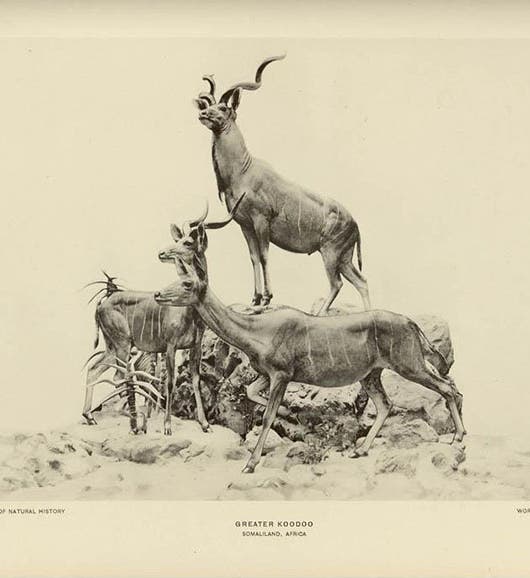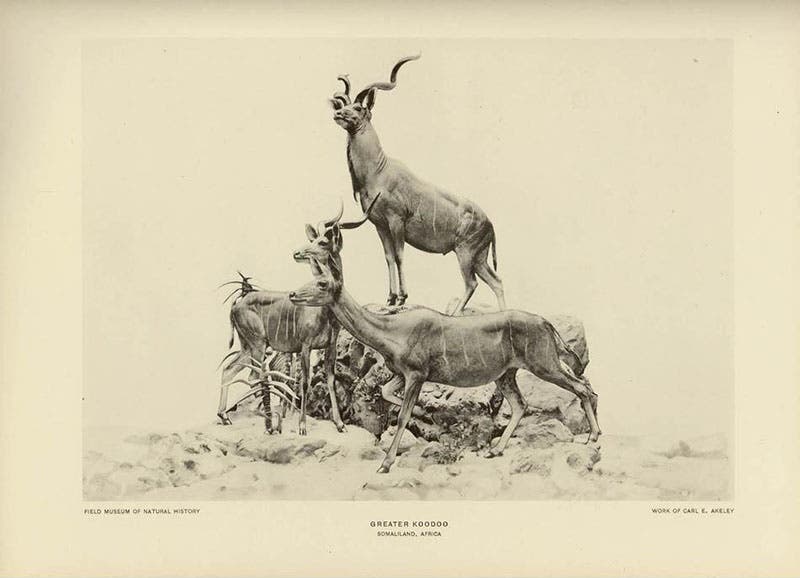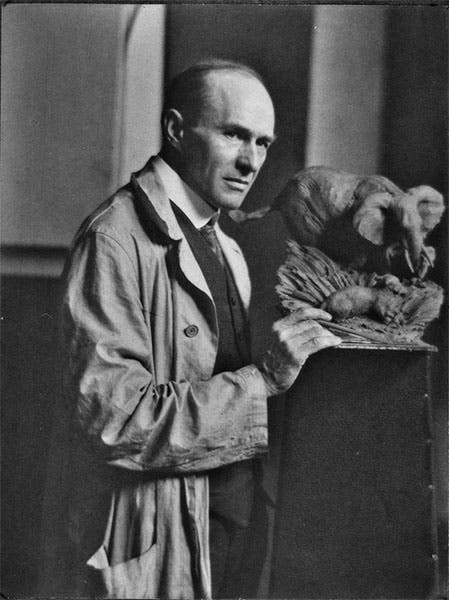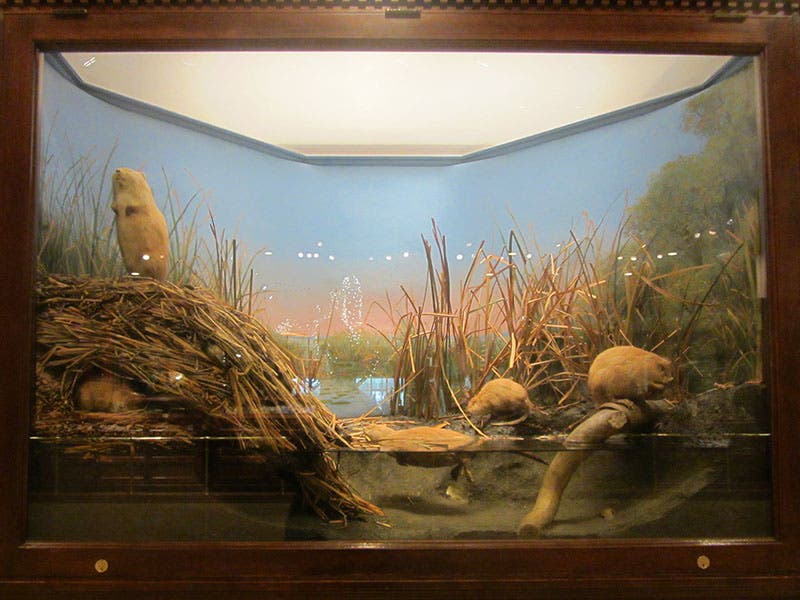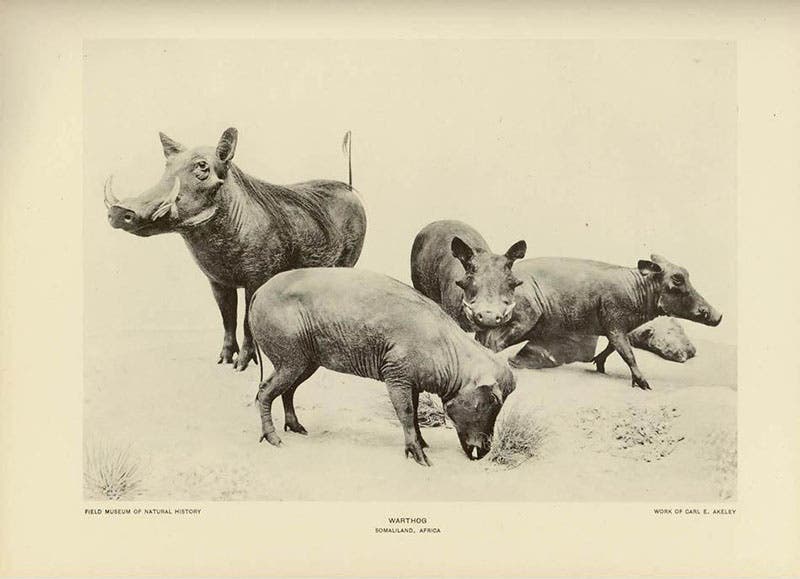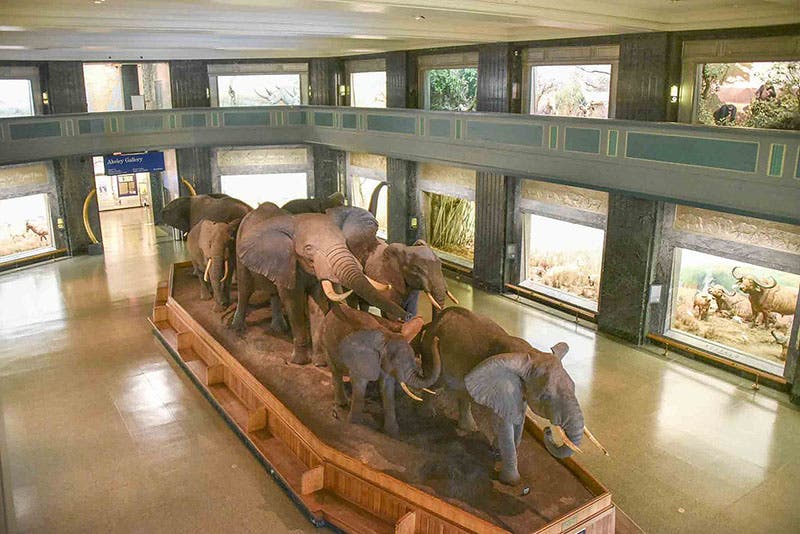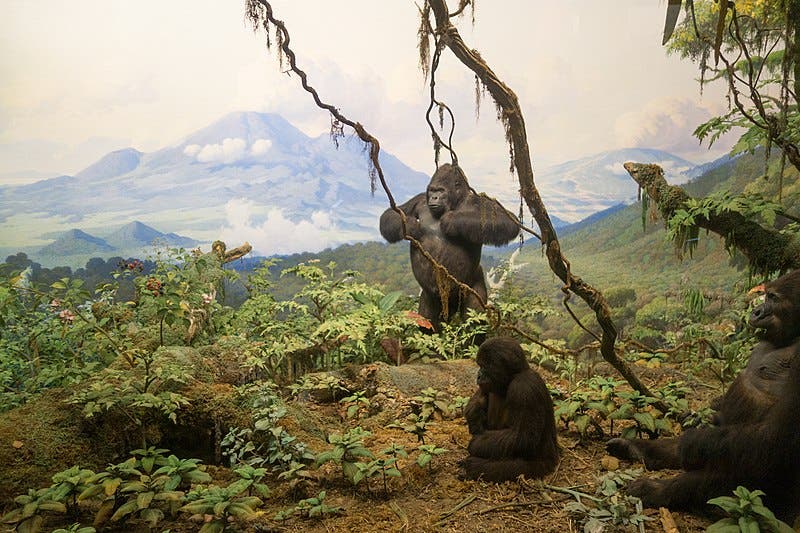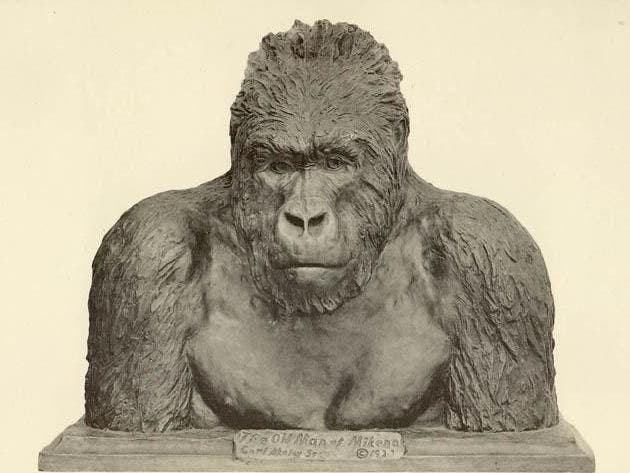Scientist of the Day - Carl Akeley
Carl Akeley, an American taxidermist, sculptor, and animal collector, died Nov. 17, 1926, at age 62. Akeley trained at Ward's Natural Science Establishment in Rochester, New York, where he learned the art of taxidermy, which was still a fairly primitive science in the 1880s (see our post on Henry Augustus Ward, who founded the company).
After helping stuff Jumbo the elephant, following his death by locomotive impact in 1885, Akeley moved on to the Milwaukee Public Museum, where he installed the first American diorama, showing a family of muskrats in their natural habitat (third image). He was hired in 1896 by the new Field Museum of Natural History in Chicago, which sent Akeley to Somaliland in Africa for the first of many collecting trips. He photographed, shot, skinned, tanned, and mounted many large animals for the Field Museum, developing a new taxidermic technique, where he would sculpt an animal form, make a plaster cast which he used to mold papier mâché forms that he mounted over light wood-and-wire armatures, and over which he stretched the tanned skins. The resulting animals were incredibly lifelike and in dynamic poses. Most of Akeley’s mounts are still at the Museum, which in 1927 published a portfolio showing all their Akeley mounts. We show two of those photogravures here (first and fifth images). We would love to have this portfolio in our collections, but we do not.
Akeley’s most famous Field Museum diorama might be a group of four, showing a family of white-tailed deer in each of the four seasons. We show a recent photograph of the “Deer in Spring” diorama (fourth image).
In 1909 (after taking part in an African safari with Theodore Roosevelt), Akeley moved to the American Museum of Natural History (AMNH) in New York, where he undertook a similar project of installing life-like mounts of African animals, this time in dioramas, including life-like habitats, which he and his wife fashioned down to the last leaf and twig. The Akeley Hall of African Mammals at the AMNH is the fruition of his dream, although it wasn't finally completed until 10 years after Akeley's death in 1926. Akeley is credited by the Museum with inventing modern taxidermy, although we out here in the Midwest know that Lewis Dyche of the University of Kansas also deserves a great deal of credit for developing new taxidermic techniques and devising life-like habitats of his own.
The centerpiece of Akeley Hall is a group mount of an elephant herd on the move (sixth image), which took Akeley many years to fashion, since each of the taxidermied pachyderms had to be shot in Africa and then prepared, and tanning elephant skin was a particularly long and arduous process. If you are opposed to shooting game animals for sport, Akeley was as well, but he defended collecting specimens for museums, as he thought it very probable that many of these species were going to disappear, and he believed that we needed to preserve their memory as best we can, with photographs, but most importantly, with museum mounts.
The gorilla diorama in Akeley Hall at the AMNH (seventh image) is Akeley’s most memorable legacy in New York, since it was in a sense inspired by his instant conversion from animal collector to conservationist when he saw his first wild mountain gorilla in the Congo in 1921. The standing gorilla in the diorama is one that Akeley called the Old Man of Mikeno, after the mountain on which he lived, and of whom Akeley also did a bronze sculpture that is on display at the Brooklyn Museum of Art (eighth image). Just before he died, Akeley convinced King Albert I of Belgium to establish a gorilla sanctuary in what was then the Belgian Congo, which Albert did in 1925, and it was the very first national park in all of Africa. Originally called Albert National Park, it was later renamed Virunga National Park, and it has gone through some very hard times in the past 30 years, with the problems in Rwanda and the breakdown of the Democratic Republic of the Congo. It helps a little that the Park was given World Heritage site status by UNESCO, but not enough, as the Park is still threatened by incursive militia activities.
Akeley died of dysentery on a subsequent trip to Africa in 1926, and is buried there, not too far from Mount Mikeno.
William B. Ashworth, Jr., Consultant for the History of Science, Linda Hall Library and Associate Professor emeritus, Department of History, University of Missouri-Kansas City. Comments or corrections are welcome; please direct to ashworthw@umkc.edu

